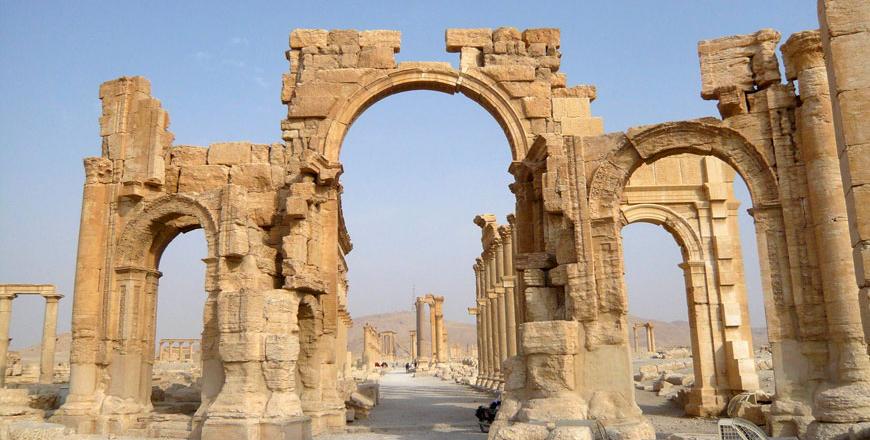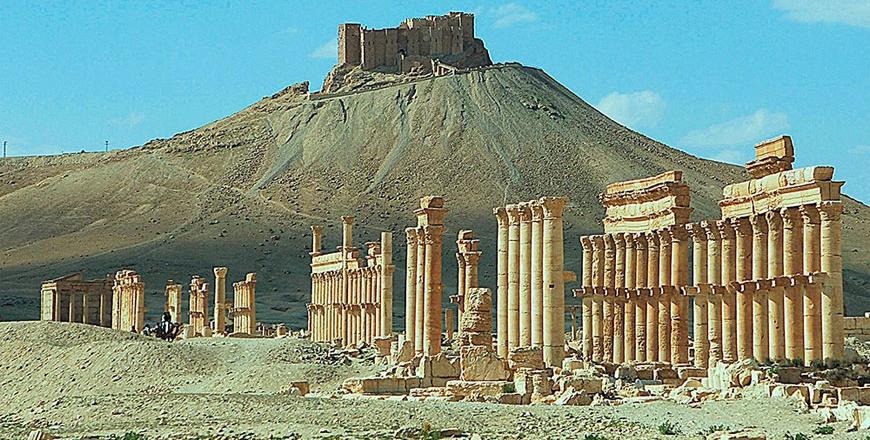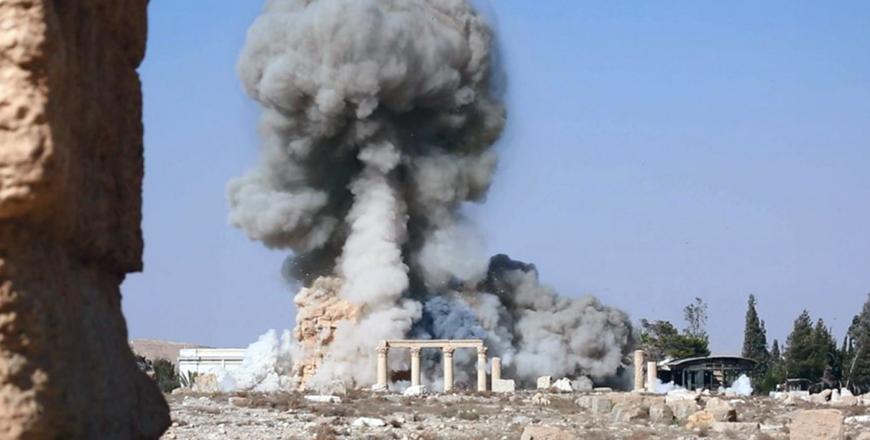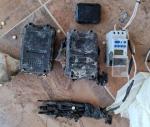You are here
Satellite images confirm major temple destroyed in Syria’s Palmyra — UN
By Reuters - Sep 01,2015 - Last updated at Sep 01,2015
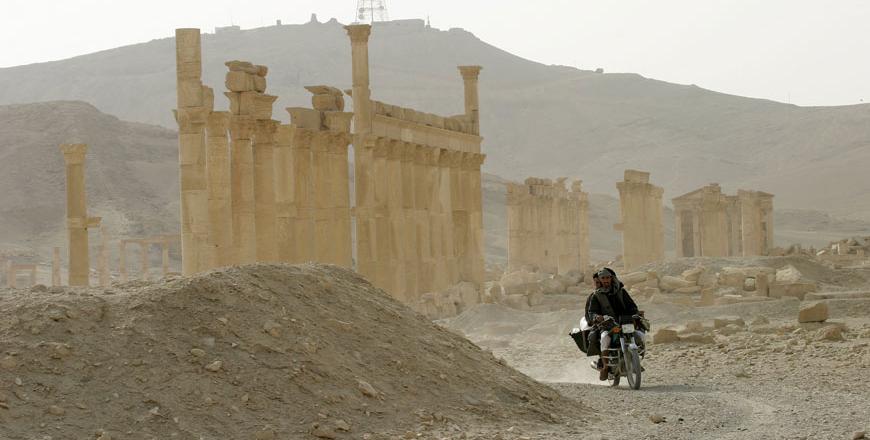
Men ride a motorbike in the historical city of Palmyra, Syria, June 11, 2009 (Reuters photo)
BEIRUT — Satellite images have confirmed the destruction of the Temple of Bel, which was one of the best preserved Roman-era sites in the Syrian city of Palmyra, a United Nations agency said, after activists said the Daesh terror group had targeted it.
A comparison of before and after images shows the damage to the temple at the UNESCO World Heritage site, the Geneva-based United Nations Institute for Training and Research (UNITAR) said.
"We can confirm the destruction of the main building of the Temple of Bel as well as a row of columns in its immediate vicinity," the agency said in an e-mail.
The Syrian Observatory for Human Rights monitoring group and other activists said on Sunday that Daesh had destroyed part of the more than 2,000-year-old temple, one of Palmyra's most important monuments.
This came a week after the militants blew up another smaller site in the central desert city.
Palmyra was one of the most important cultural centres of the ancient world, according to cultural agency UNESCO, which has described it as the crossroads of several civilisations. Its main colonnaded street is one kilometre long and forms the monumental axis of the city.
The head of UNESCO said in a statement the destruction of what it described “as one of the most important 1st Century religious monuments in the Middle East”, was an “intolerable crime against civilisation”.
“The power of culture is greater than that of all forms of extremism and nothing can stop it,” Director-General Irina Bokova said.
“Whoever saw Palmyra remains forever marked by the memory of the city which embodies the dignity of the entire Syrian people and humanity’s loftiest aspirations,” she added.
Information on events inside Palmyra has been patchy since the militants seized it from government forces in May. Activists say the fighters are closely monitoring communications inside the city.
Daesh has declared a “caliphate” in territory it holds across Syria and Iraq and has destroyed other monuments it says are pagan and sacrilegious.
UNESCO has called such acts war crimes and says Daesh seeks to wipe out evidence of Syria’s diverse heritage.
Before the capture of the city, Syrian officials said they had moved hundreds of ancient statues to safe locations.
Last month Daesh beheaded the guardian of Palmyra’s ruins, Khaled Al Asaad, an 82-year-old Syrian archaeologist who had looked after the site for more than four decades, according to Syria’s antiquities chief.
Related Articles
BEIRUT — A powerful blast in the ruins of Syria's ancient Palmyra raised fears Monday that the Daesh terror group has damaged another of the
BEIRUT — Here is a roundup of major Syrian historical sites or monuments that have been destroyed by all sides in the country's crisis
BEIRUT/DAMASCUS — Daesh militants published photos on Tuesday purporting to show the destruction of a Roman-era temple in the ancient Syrian


